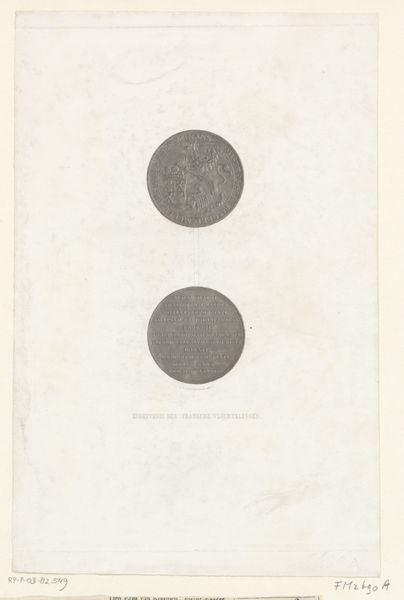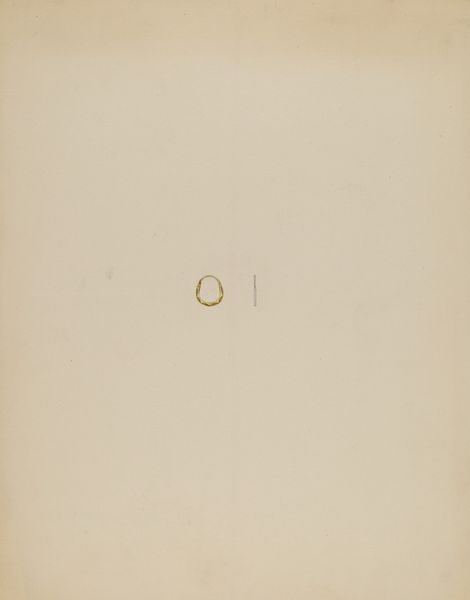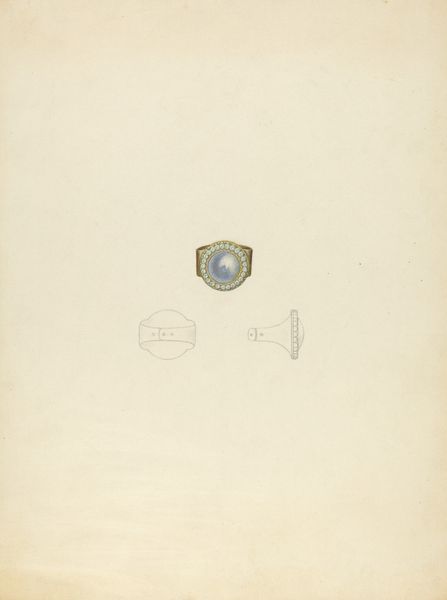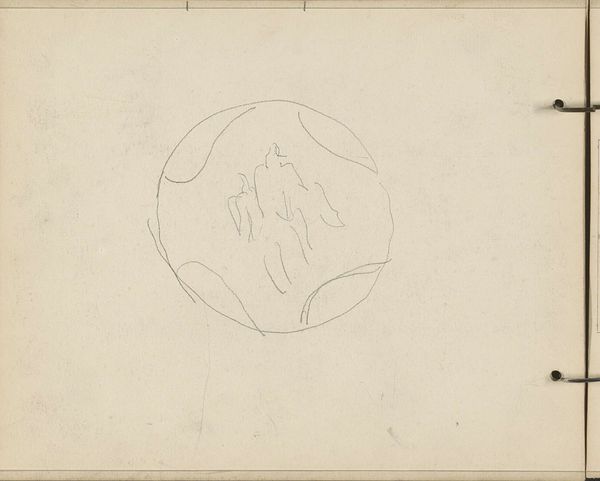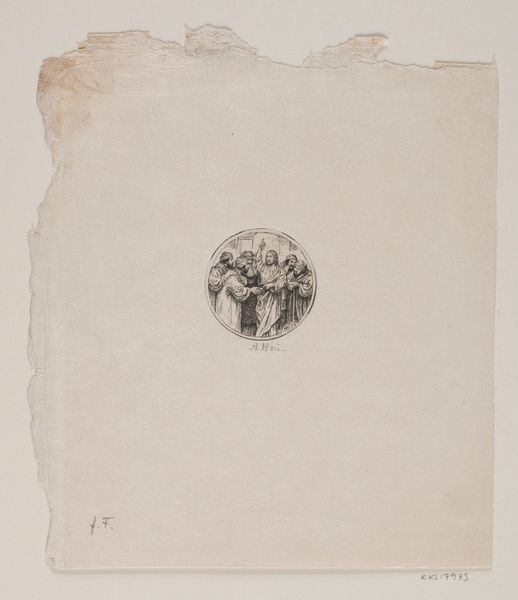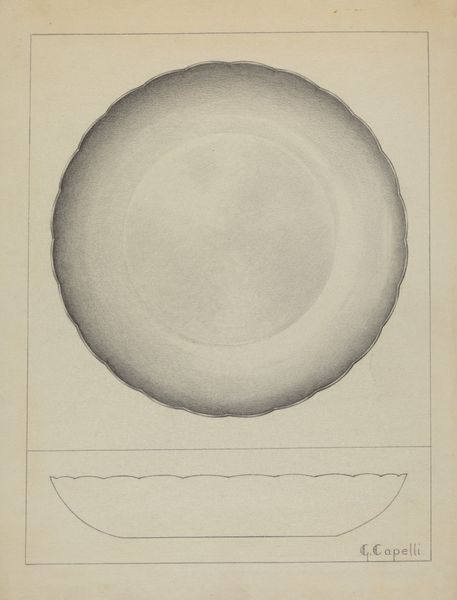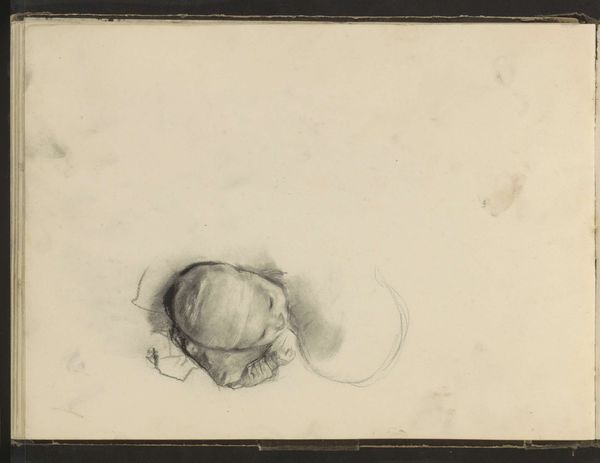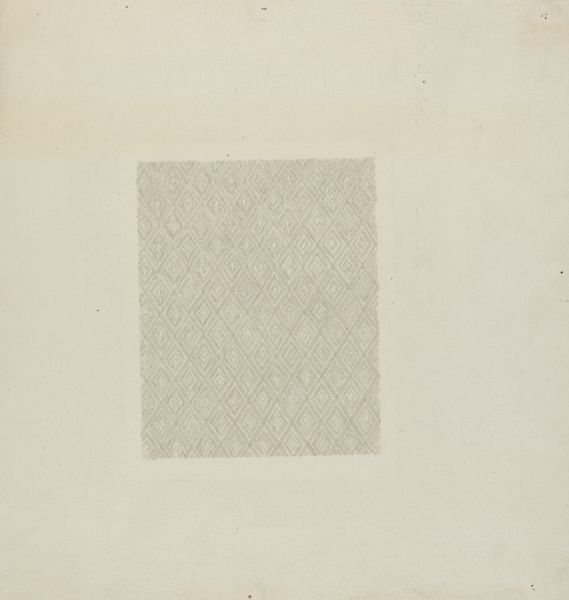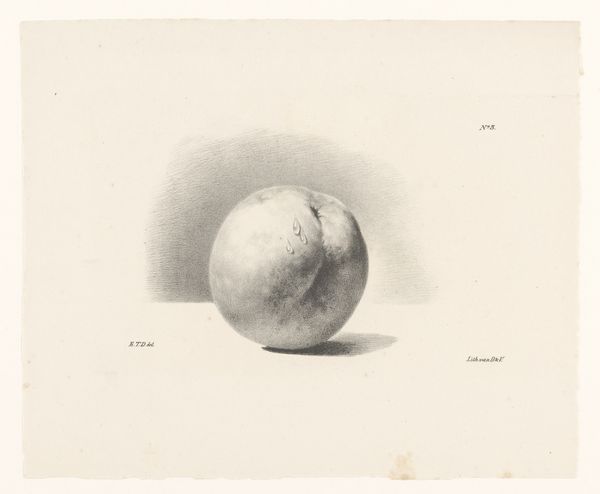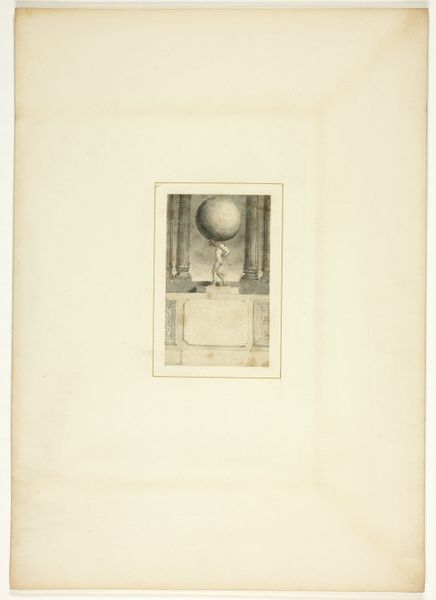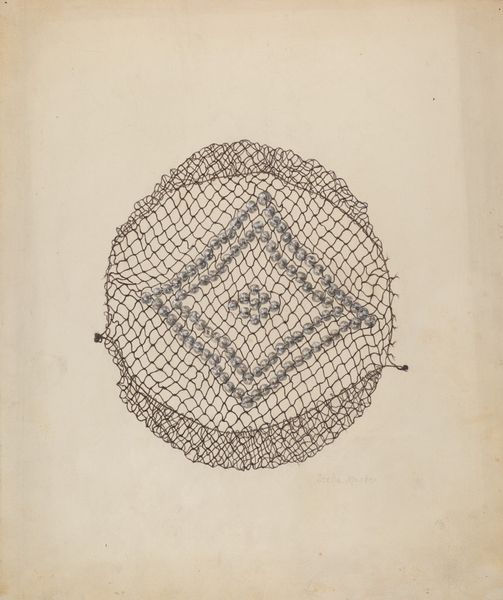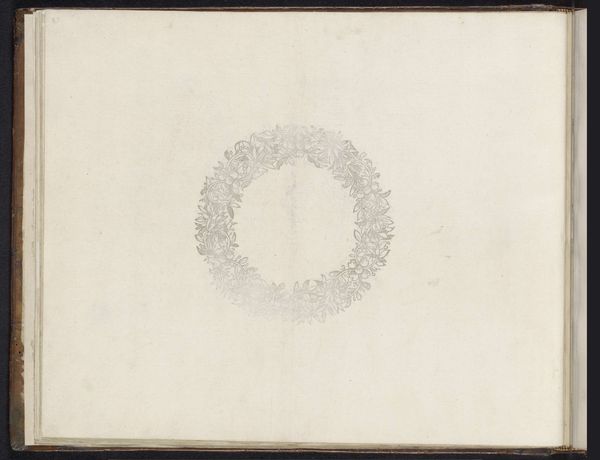
drawing, graphic-art, pencil
#
drawing
#
graphic-art
#
pencil drawing
#
pencil
#
academic-art
Dimensions: overall: 27.7 x 22.7 cm (10 7/8 x 8 15/16 in.)
Copyright: National Gallery of Art: CC0 1.0
Editor: This is Carmel Wilson's "Trademark for Flagon" from around 1938, rendered in pencil. It's a very subtle piece, almost faded, with a circular trademark dominating the composition despite its size. What strikes you about this particular graphic work? Curator: What immediately asserts itself is the drawing's overall formal austerity. The delicate pencil strokes, combined with the minimalist composition, produce an image which invites contemplation on line, form, and the interplay between positive and negative space. Observe how the circular form, containing the trademark's lettering, is meticulously rendered, standing in contrast to the vast expanse of the unadorned paper. Editor: It’s interesting that you highlight the negative space, because it’s such a large part of the work. Is that simplicity deliberate, or a consequence of it being a study? Curator: I suggest that this conscious paring-down focuses the viewer's attention to the essence of the trademark itself. We observe here an invocation, a presence that resides beyond simple representation. Note how the light gently models the form of the seal itself. Does that soft rendering reveal an implied volume and depth? Editor: Yes, now that you mention it, I see how the subtle shading gives it a three-dimensional quality, a tactile presence despite being a drawing. I hadn't considered that before. Curator: Indeed, by examining the meticulous nature of the line work and composition, we arrive at a point where formalism ceases to merely be about observation, but about interpretation. Editor: It is definitely interesting how the attention to the pure, visual elements really affects how you perceive the art piece. Thank you! Curator: A pleasure. Formalist analysis opens possibilities in the appreciation of such works, as it helps us better grasp what is happening with a piece when external factors are unknown or unknowable.
Comments
No comments
Be the first to comment and join the conversation on the ultimate creative platform.
